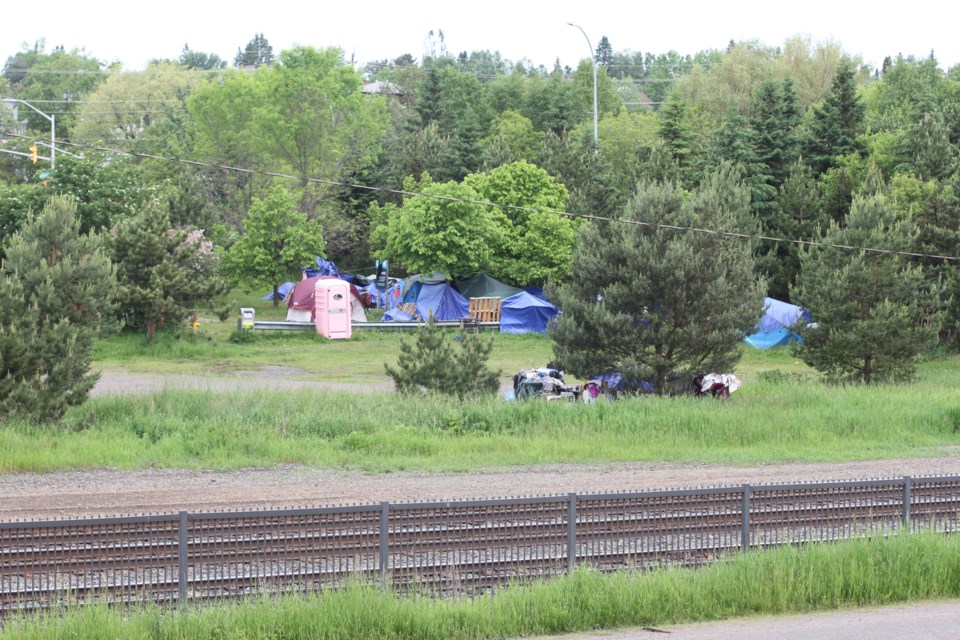THUNDER BAY — Currently at least 557 people are experiencing homelessness in the City of Thunder Bay. That's how many people were identified in a recent survey.
However, the numbers are a “gross undercount,” according to Bonnie Krysowaty, poverty reduction strategy coordinator with the Lakehead Social Planning Council.
“There's no possible way to capture every single person's information in 24 hours,” said Krysowaty.
“It's not ok for people to sleep outside in encampments. It's not ok for people to sleep at other people's houses where they're not maybe welcome. It's not ok for people to wonder where they're going to sleep tonight,” said Krysowaty.
"We have an epidemic of homelessness in Thunder Bay and we can't be complacent,” Krysowaty said.
The Lakehead Social Planning Council and Thunder Bay Indigenous Friendship Centre conducted a point-in-time count, with support from partner organizations, back in October at three different locations that unhoused individuals are known to frequent.
The count noted that 78 per cent, more than three out of four, people identified as Indigenous.
“I think that's something we really have to be cognizant of,” Krysowaty said.
“When we're figuring out solutions to end homelessness, solutions to prevent homelessness, we have to look at all of the reasons why people are experiencing homelessness. And if there is a discrepancy between Indigenous people and non-Indigenous people, we really need to look at why that's happening,” she continued.
Krysowaty stated that one of the main reasons people are losing their homes is due to substance use, but other reasons the document lays out were problems with a domestic partner, not enough income, problems with a landlord, unsafe living conditions, incarceration, and problems with a parent or guardian.
Experience in the child welfare system was a common theme among the people surveyed.
Forty-three per cent spent time in foster care or a group home.
Eleven per cent said they began experiencing homelessness within one year of leaving foster care.
Thirty-two per cent said they felt that child protection services did not help transition them to living independently after leaving foster care or a group home.
“People really needed mental health counselling, employment assistance, addiction counselling, but also identification assistance. Some people have no identification, they have no income at all. So, just starting with those basic needs is a first step,” Krysowaty said.
The count shows that most unhoused people, 407 of the 557, are between the ages of 25 and 49, but Krysowaty said that a growing number are over the age of 50.
“Every time we do the point-in-time count, every time I talk to people working at organizations that serve people experiencing homelessness. This number is getting higher,”
She said that very soon a majority of Thunder Bay’s general population will be people over the age of 55. The
“We're seeing it among the population of people experiencing homelessness and that comes with, of course, special needs, special supports and services,” she said.
The survey also asked people where they were living before coming to Thunder Bay. About 22 per cent of people came from outside the city.
“It was a very small percentage actually,” Krysowaty said.
Six per cent came from Winnipeg and six per cent from Fort Frances, the rest came from Sioux Lookout, Longlac, Kenora and Toronto.
Of those who had moved to Thunder Bay, she said only a small percentage came to access support and services or attend school, mostly they moved here with or to be close to family and friends.
“People didn't want to be isolated and don't want to be isolated. Nobody wants to be alone and isolated. It's a social determinant of health for us to be included socially. So, for people to come here to be with other people is understandable,” Krysowaty said.
When trying to find permanent housing, the survey found that 67 per cent of people found the rent too high, 62 per cent said they don’t have enough income and 39 per cent said substance use was an issue.
“We've been a proponent of different types of housing for all types of people. There is not one solution to homelessness. Some people need transitional housing while other people are fine to get into their own place and start paying rent once they have their income assistance and other supports that they need,” Krysowaty said.
However, another challenge surveyors found is that people don’t have access to transportation. Eighty-three per cent said a bus pass would be a practical support system to enable unhoused individuals to get to appointments such as apartment viewing and signing a lease.
Sixty-five per cent said that access to a cell phone would also help with applying for a job and getting an interview.
“We need to work collectively around this epidemic. This is a collective issue, not one government, not one organization, not one group is going to solve this. This takes a huge team effort. Many governments, many organizations, many people coming together,” she added.
